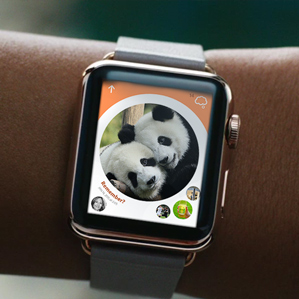How People Will Use the Apple Watch
When Apple unveiled the first iPad in 2010, many pundits scoffed. Among the gripes: tablet computers had been tried before without success; most people already had laptops; and wasn’t it just a giant iPod Touch?

The market, as we know, reacted differently. Tablet computers are now a hit—thanks in no small part to Apple’s savvy design, which offered people something that was instantly comprehensible and easy to use, but also flexible enough to suggest thousands of new applications.
With the upcoming release of the Apple Watch, the company seems poised to repeat the trick. Despite a raft of existing smart watches from companies including Samsung, Motorola, and Pebble, wearable technology has resisted mainstream appeal, partly because the devices don’t feel particularly useful (see “So Far, Smart Watches Are Pretty Dumb”).
The advance marketing for the Apple Watch has done little to explain why this product will fare better, but the tools (WatchKit) and documentation (Human Interface Guidelines) released for app developers provides some clues. They suggest a simple, intuitive mode of interaction centered on streamlined alerts. If the market influence of the iPhone and iPad are any indication, the user experience patterns that Apple establishes may come to define what all smart watches are “for” in eyes of their users.
The Apple Watch might seem like a computer that resides on your wrist, but technically that isn’t the case. Apps that run on it are actually just extensions of iOS apps that run on an iPhone; they use the watch as an auxiliary display. This encourages developers to exploit the device as a kind of remote control for their existing iOS apps, and imagine the UX accordingly.
“You’re not allowed to run code on the watch at all,” says William Van Hecke, user experience lead at the Omni Group, a productivity software vendor that’s developing apps for the Apple Watch.
Nik Fletcher, product manager at Realmac Software, says his team “carefully reduced the core essence” of the company’s to-do list app, called Clear, in order to adapt it for the Apple Watch. Whereas the full iOS app lets users reorder tasks or mark off entire lists in one stroke, and includes animations and sound effects, the new version focuses on what Fletcher terms “recall and completion.” Upcoming reminders can be viewed using the watch’s (noninteractive) Glance view, and individual items can be crossed off. New entries must be input via the iPhone or Mac version of the software.
According to Van Hecke, any app that already emphasizes this kind of “one-bit interaction”—that is, a simple choice to confirm or dismiss information—will translate easily to the Apple Watch. “Nobody will ever expect the [watch] app to reproduce the [iPhone app’s] whole functionality, which is liberating,” he says. Many of the new device’s first-wave apps will most likely exploit what Van Hecke calls the “window on your wrist” by delivering notifications and offering simple interactions.
This, of course, raises the specter of a glut of competing interruptions. The need to sort out which notifications and functions are “allowed to tap you on the wrist” could even stimulate a new breed of meta-apps, says Laura Seargeant Richardson, a user experience expert at Argodesign, a consultancy based in Austin, Texas. “I could see an entire app dedicated to helping people think through those questions,” she says. The Apple Watch’s built-in heartbeat sensor could conceivably be used to prioritize potential interactions based on users’ stress levels.
Like existing smart watches, the Apple Watch assumes that the primary surface for interacting with apps will be an outward-facing touch screen. But the dial-like “digital crown” on the side of the device will make it easier to navigate content on a tiny display. Twisting the dial lets the user zoom in to images or scroll through lists, while clicking it brings up the home screen.
The unique promise of wearable technology lies in its intimate proximity to our bodies, which makes Apple’s inward-facing “taptic engine” particularly interesting. This lets the device deliver pulses of vibration, or haptic feedback, to the wearer’s wrist, and it is unavailable to third-party developers for now. If Apple removes that barrier, the watch’s true power as a new kind of personal communicator will be unleashed, says Richardson. “A watch is a very covert object,” she says. “I could see a new kind of private language or low-level communication emerging from this kind of wearable, using pulses or squeezes.”
Keep Reading
Most Popular
Large language models can do jaw-dropping things. But nobody knows exactly why.
And that's a problem. Figuring it out is one of the biggest scientific puzzles of our time and a crucial step towards controlling more powerful future models.
The problem with plug-in hybrids? Their drivers.
Plug-in hybrids are often sold as a transition to EVs, but new data from Europe shows we’re still underestimating the emissions they produce.
Google DeepMind’s new generative model makes Super Mario–like games from scratch
Genie learns how to control games by watching hours and hours of video. It could help train next-gen robots too.
How scientists traced a mysterious covid case back to six toilets
When wastewater surveillance turns into a hunt for a single infected individual, the ethics get tricky.
Stay connected
Get the latest updates from
MIT Technology Review
Discover special offers, top stories, upcoming events, and more.